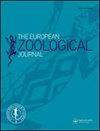温带鸟类的夏季水源:使用、重要性和威胁
IF 1.4
4区 生物学
Q2 ZOOLOGY
引用次数: 2
摘要
水对鸟类来说至关重要,尤其是在炎热的天气里。然而,水的可得性,以及鸟类在现代人为栖息地对水的利用,还远未被了解,特别是在干旱地区以外。在这里,我们分析了在温带地区收集的大型全国性数据集,并概述了波兰城市和农村栖息地鸟类使用的小型水资源。我们调查了鸟类使用独立水源的比例,对各种水源的偏好,以及影响饮水和洗澡行为的因素和威胁。利用水资源的鸟类有不同的分类和生态类群。物种组成受水源附近环境条件和背景物种组成的影响略有不同。共观察到51个物种使用水,占附近记录的80个物种的64%。水的利用概率与温度呈正相关,进一步强调了未来气候变暖情景下水的重要性。我们发现,小型水资源(包括人类提供的水资源)被鸟类利用的可能性低于类似自然水域(水坑、池塘、喷泉)的资源。这一新发现可能对鸟类保护规划具有特别重要的意义,包括为自然爱好者提供适当的行为(提供水源和减少鸟类因捕食风险而受到的压力)。最后,我们评估了洗澡和喝水的鸟类面临的潜在威胁,如移动的汽车、溺水的风险和捕食者的存在。目前,任何一种地表水都有利于栖息在人类改造景观中的野生鸟类。在热浪和干旱期间,获得水对许多鸟类来说至关重要。不幸的是,据预测,在气候变化的影响下,这种极端事件将变得更加频繁和严重。因此,我们鼓励进一步研究鸟类对独立水的利用,类似于对冬季鸟类喂食者的许多研究,并考虑在环境管理中维护各种可获取水源。本文章由计算机程序翻译,如有差异,请以英文原文为准。
Summer water sources for temperate birds: use, importance, and threats
Abstract Water is crucial for birds, especially during hot weather. However, the availability of water, and its use by birds in modern anthropogenic habitats, is far from understood, especially outside arid regions. Here, we analyze a large nationwide dataset collected in the temperate zone and present an overview of small water resources used by birds in urban and rural habitats in Poland. We investigated the proportion of birds using free-standing water, preferences for various water sources, and factors and threats influencing drinking and bathing behaviour. Birds using water resources are represented by various taxonomic and ecological groups. Species composition differed slightly due to environmental conditions in the vicinity of the water resource and the background species composition. In total 51 species were observed using water, representing 64% of the 80 species recorded in the vicinity. The probability of water usage was positively related to temperature, which further emphasizes the importance of water under future climate-warming scenarios. We show that small water resources, including those provided by people, were less likely to be used by birds than resources resembling natural waters (puddles, ponds, fountains). This novel finding may have particular importance for avian conservation planning, including appropriate behaviour for nature lovers (providing water sources and reducing stress to birds due to predation risk). Finally, we assessed potential threats to bathing and drinking birds, such as moving cars, risk of drowning, and the presence of predators. Any kind of surface water is currently beneficial for wild birds inhabiting human modified landscapes. During heatwaves and droughts access to water can be crucial for many birds. Unfortunately, such extreme events are predicted to become more frequent and more severe under climate change. Therefore, we would encourage further research in the use by birds of free-standing water, similar to the many studies of birdfeeders in winter, and to consider the maintenance of diverse sources of accessible water in environmental management.
求助全文
通过发布文献求助,成功后即可免费获取论文全文。
去求助
来源期刊

European Zoological Journal
Agricultural and Biological Sciences-Animal Science and Zoology
CiteScore
3.10
自引率
5.60%
发文量
80
审稿时长
30 weeks
期刊介绍:
The European Zoological Journal (previously Italian Journal of Zoology) is an open access journal devoted to the study of all aspects of basic, comparative and applied protozoan and animal biology at molecular, cellular, tissue, organ, organismal, population, and community-ecosystem level. Papers covering multiple levels of organization and integrative approaches to study animal form, function, development, ecology, evolution and systematics are welcome. First established in 1930 under the name of Il Bollettino di Zoologia, the journal now has an international focus, reflected through its global editorial board, and wide author and readership.
 求助内容:
求助内容: 应助结果提醒方式:
应助结果提醒方式:


